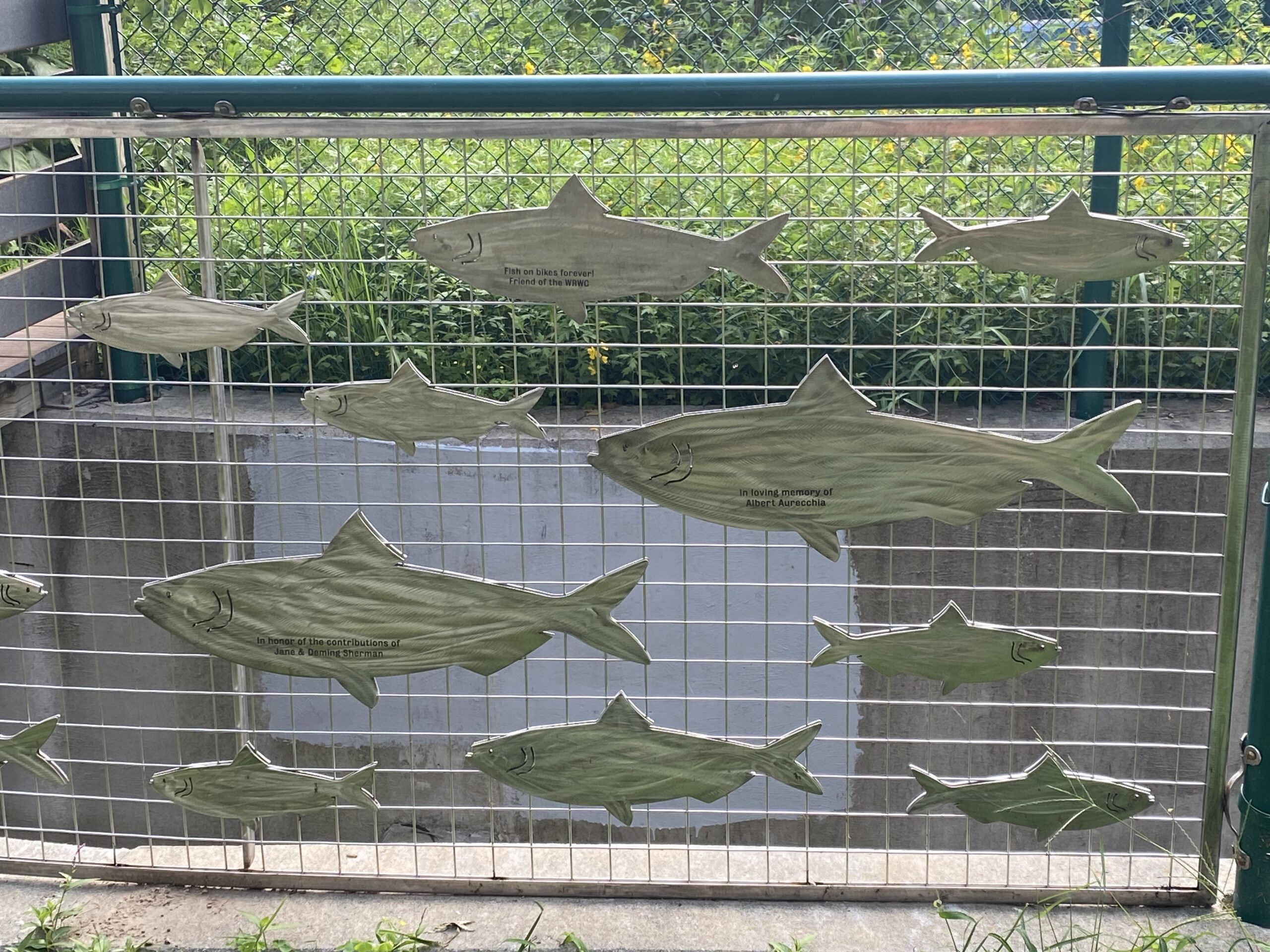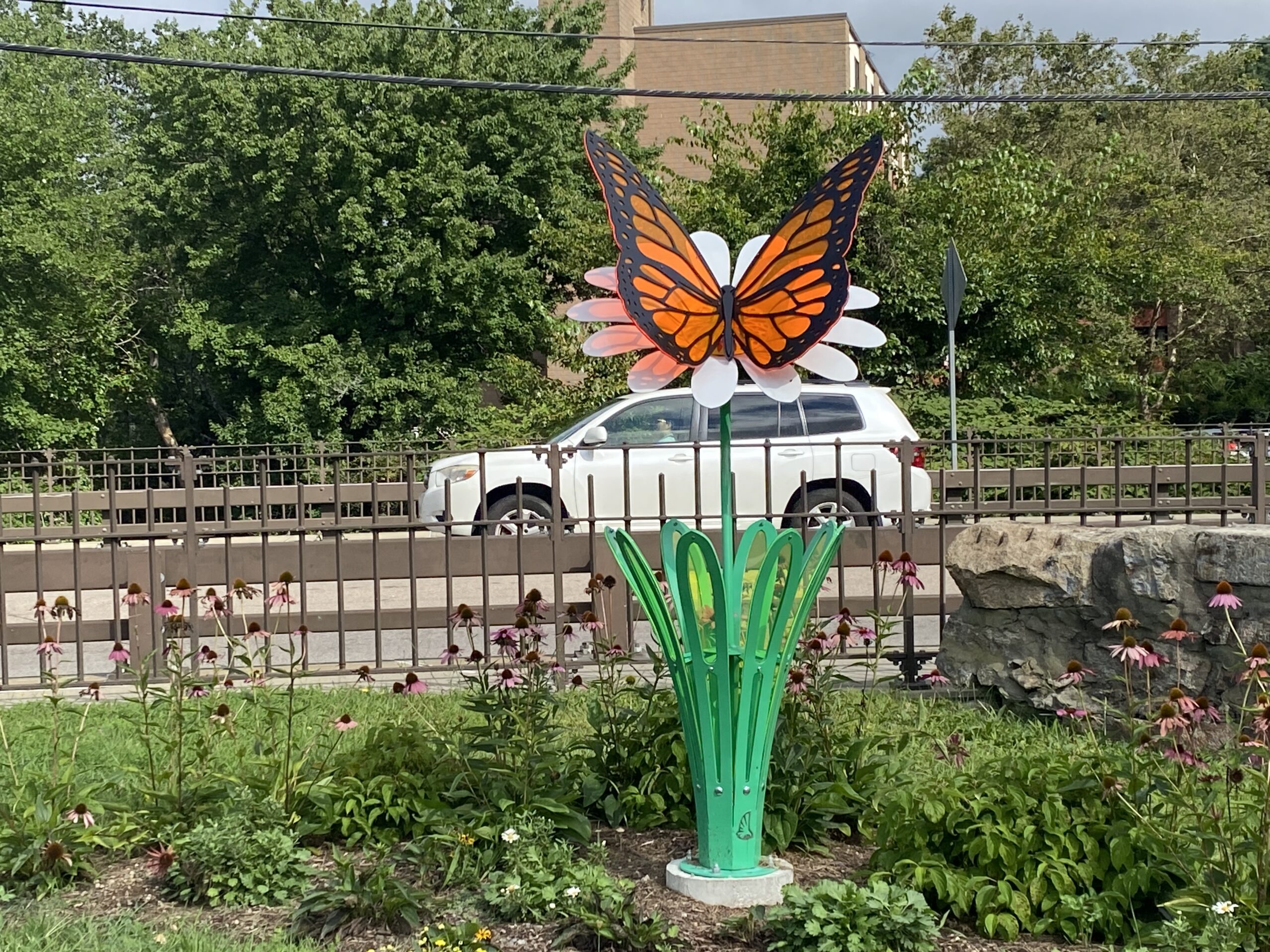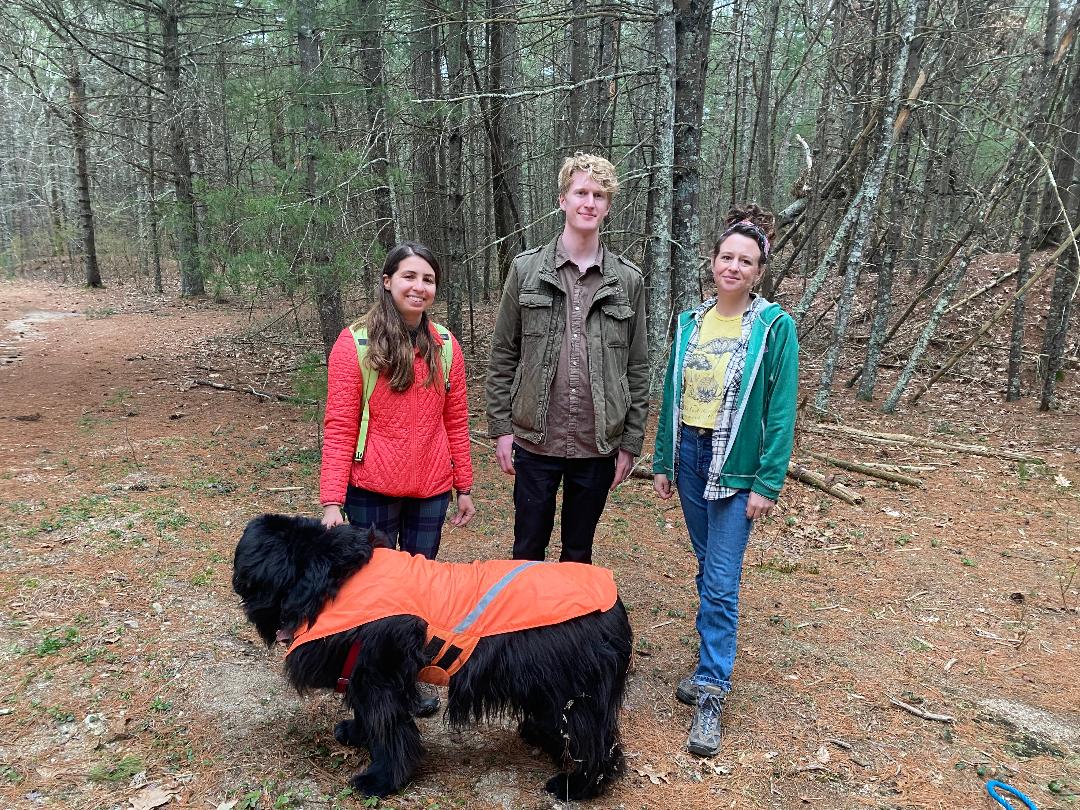Woonasquatucket River Greenway a Slice of Nature in an Urban Setting
September 18, 2023

JOHNSTON, R.I. — Winding more than 7 miles from Johnston to Providence, the Woonasquatucket River Greenway is a linear slice of tranquility that has transformed what was once a dumping ground for trash into a scenic, vital urban bicycle path.
Following the meanderings of the river, whose name means “where the salt water ends” in Algonquin, the Greenway has helped restore 75 acres of land in the communities it touches, which include Johnston, Providence, and North Smithfield.
The Greenway was the idea of Fred Lippitt, who was then chair of The Providence Plan, in 1993. He hoped to revitalize Providence’s impoverished and underserved neighborhoods, especially Olneyville. Lippitt realized that the Woonasquatucket River was an untapped asset and resolved to restore it and the adjacent land.

The Woonasquatucket River was once hard to find, lined with abandoned industrial sites and polluted from its use as a power source for mills. Debris, such as tires and shopping carts, dumped in its waters. Although the river bottom still retains some chemical pollution, the water itself is cleaner than it has been in the past five years, according to the Woonsquatucket River Watershed Council (WRWC), the nonprofit that oversees the Greenway.
Lippitt helped raise more than $12 million in capital funding to restore the abandoned land along the river and established a $2.7 million endowment fund to help sustain the Greenway. The WRWC obtained $3.1 million in federal transportation funds to build the bicycle path and a $1 million HUD grant for work on the Greenway. The Woonasquatucket River was designated an American Heritage River in the late 1990s, allowing the WRWC to tap into additional funding to help clean up and protect the river and its surrounding land.
Now “the Woony’s” banks are cleared and seeded with native plants and habitat for muskrats, songbirds, and possibly even a beaver or two, although “I haven’t seen them myself,” said Alicia Lehrer, executive director of the WRWC. She said what people think are beavers are more likely muskrats. “We certainly have plenty of those.”
Colorful painted signs made by schoolchildren line the paved Greenway, explaining why some areas have been trimmed back — clearing away nonnative plants — and marking where native habitat has been planted to help restore riparian buffers and wetlands along the river.
“We’re pretty intentional about what we plant out here,” Lehrer said. The results are visible — birds twitter in the shrubbery, rabbits nibble the grass, coyotes have been spotted, and bees buzz happily in flowers planted along the path.
In addition to nature’s artwork, there are 35 installations of human-made art along the Greenway, including brightly painted electric boxes, sculptures, colorful benches, bird boxes made of reclaimed trash from the river and its banks, bright bee feeder boxes, and murals.

Warren Collins, an artist who designed a colorful butterfly sculpture on the Greenway near Killingly Street and Manton Avenue on the Johnston/Providence line, thinks the area is “the nicest part of the whole city. It’s amazing out there,” he said.
He said when the WRWC approached him about making art for the Greenway, the theme was pollinators. “The idea was to have sculptures of bees and butterflies. I decided to throw a flower in there” along with a butterfly, he said, calling his work “engineered art.”
One of the special things about the Greenway is the diversity of those who use it. Walkers, bikers, and joggers using the path on any given day represent a diverse range of ages, ethnicity, skin color, and socioeconomics.
“When I come out in the evenings, it’s always packed,” Lehrer said.
The Greenway has also had a positive effect on the neighborhoods it touches.
The Greenway played a part in rebuilding and restoring a number of closed or abandoned parks along its route, including Merino Park and Donigan Park, and helped turn undeveloped space into the Buttonhole Golf Course, a 9-hole urban layout that abuts the Greenway.
Thanks in part to the project, 16 acres of contaminated land and 52 acres of abandoned public lands have been restored and now add to the vitality of the surrounding neighborhoods with recreational and youth job training programs, according to the WRWC. The Greenway promoted the restoration of abandoned industrial sites, the reuse of historic mill buildings, and residential stabilization, with more than $300 million in new commercial, residential, and mixed-use projects that are in various stages of development, according to the WRWC.

The WRWC also champions the use of green infrastructure, which uses soil and plants to capture and treat stormwater before it enters the river. And because climate change often disproportionately affects urban, vulnerable communities with issues such as increased flooding and hotter temperatures in summer, the WRWC is working to help increase communities’ resilience to climate change by increasing shade, cleaning the air, and filtering stormwater into the ground, according to the council.
Walking along the bike path, Lehrer pointed to a nearby business abutting the path. “That guy’s a sweetheart,” she said of the property’s owner, explaining that he allowed the WRWC to clear part of his property to allow access to the river. In return, she said, the WRWC helped retrofit his property with stormwater infrastructure, and helped install solar panels on the roof of his business.
But not all neighbors welcomed the Greenway, Lehrer said. Residents of the Johnston neighborhood in which a section of the Greenway begins were not pleased to have their quiet dead-end street become the entrance to a bike path, and were known to harass dog walkers and people who mistakenly assumed they could park there to access the path. Now “no parking” signs and cement posts make it clear the entrance is only for walkers and bikers.
Work on the Greenway is ongoing, said Lehrer, explaining that one area of the path is part of a Superfund cleanup at the site of the former Centerdale Manor. Once that is complete, she said, she’s hoping they can extend the Greenway along that stretch of the river.
“Our goal is to connect this Greenway to all the other greenways in the state,” she said.
This story is part of our “Special Places” series. Read other stories in this series.




Here is a link to the a “story map” of all the 35 plus pieces of artwork on The Greenway that you can check out:https://storymaps.arcgis.com/stories/e97a6ee25a844dbba2172b96c79909fe
The Greenway is growing…Promenade and Kinsley separated bike lane project has been awarded in Providence and construction will begin in the Spring!! Designs for improved spurs on Heath Street and Buttonhole Drive in Providence are in design.
Smithfield’s first mile of bike-path are in design and the WRWC was awarded funding in Johnston to improve habitat and water access while connecting Cricket Field to the Smithfield Town Line!
Join the WRWC and Gallery Night Providence on an Art Tour of the Greenway, Thursday, September 21st, 5-7
Register: https://wrwc.org/wp/events/art-tour/